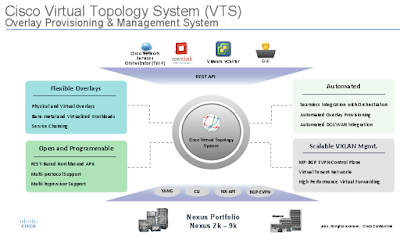Verizon Enterprise Solutions announced a significant expansion of its Secure Cloud Interconnect service to Latin America and to additional sites in Europe and the U.S.
Verizon’s Secure Cloud Interconnect service, a software-defined networking offering, helps enterprises seamlessly connect, manage and secure their cloud environments that often extend across multiple clouds and data centers around the globe.
In total, Secure Cloud Interconnect service now offers secure, private connections to six cloud providers (Amazon Web Services, Google, HP, Microsoft Azure Express Route for Microsoft Office 365/Skype for Business/Government Cloud, Salesforce; Verizon ) and three data center providers (Equinix, CoreSite, and Verizon) at more than 30 global locations in the Americas, Latin America, Europe and the Asia-Pacific region.
 “Verizon’s Secure Cloud Interconnect allows users to connect to applications simply, securely and reliably,” said Shawn Hakl, vice president of enterprise networking and innovation for Verizon. “SCI customers will find our solution delivers an unbeatable combination of performance, security and efficiency to help enable their digital transformation while reducing the complexity often associated with cloud computing.”
“Verizon’s Secure Cloud Interconnect allows users to connect to applications simply, securely and reliably,” said Shawn Hakl, vice president of enterprise networking and innovation for Verizon. “SCI customers will find our solution delivers an unbeatable combination of performance, security and efficiency to help enable their digital transformation while reducing the complexity often associated with cloud computing.”
Verizon’s Secure Cloud Interconnect global footprint:
Verizon Enterprise Solutions also announced the expansion of the Secure Cloud Interconnect in the public sector. The service – now available at more than 30 locations across the Americas, Latin America, Europe and the Asia-Pacific region – supports cloud (public, private and hybrid) and colocation solutions from a growing roster of connected cloud providers.
http://www.verizon.com/about/news/verizon-secure-cloud-interconnect-service-expands-latin-america-deepens-european-us-footprint
Verizon’s Secure Cloud Interconnect service, a software-defined networking offering, helps enterprises seamlessly connect, manage and secure their cloud environments that often extend across multiple clouds and data centers around the globe.
In total, Secure Cloud Interconnect service now offers secure, private connections to six cloud providers (Amazon Web Services, Google, HP, Microsoft Azure Express Route for Microsoft Office 365/Skype for Business/Government Cloud, Salesforce; Verizon ) and three data center providers (Equinix, CoreSite, and Verizon) at more than 30 global locations in the Americas, Latin America, Europe and the Asia-Pacific region.
 “Verizon’s Secure Cloud Interconnect allows users to connect to applications simply, securely and reliably,” said Shawn Hakl, vice president of enterprise networking and innovation for Verizon. “SCI customers will find our solution delivers an unbeatable combination of performance, security and efficiency to help enable their digital transformation while reducing the complexity often associated with cloud computing.”
“Verizon’s Secure Cloud Interconnect allows users to connect to applications simply, securely and reliably,” said Shawn Hakl, vice president of enterprise networking and innovation for Verizon. “SCI customers will find our solution delivers an unbeatable combination of performance, security and efficiency to help enable their digital transformation while reducing the complexity often associated with cloud computing.”Verizon’s Secure Cloud Interconnect global footprint:
- Amazon Web Services: Sao Paulo; Silicon Valley, Los Angeles and New York; Singapore, Sydney, and Tokyo; London and Frankfurt, Germany
- Google: Chicago and Denver; and Hong Kong and Singapore
- HP: Atlanta (2); and Frankfurt and Russelsheim, Germany
- Microsoft Azure ExpressRoute and Microsoft ExpressRoute for Office 365: Silicon Valley, Washington, D.C.; London; Hong Kong and Sydney
- Salesforce.com: Chicago and San Jose, Calif.
- Verizon Cloud: Sao Paulo; Culpeper, Va., Denver, Miami; and Santa Clara, Calif.; and London and Amsterdam.
- Future expansion plans include a significant build out in the Asia-Pacific region slated to be completed this fall.
Verizon Enterprise Solutions also announced the expansion of the Secure Cloud Interconnect in the public sector. The service – now available at more than 30 locations across the Americas, Latin America, Europe and the Asia-Pacific region – supports cloud (public, private and hybrid) and colocation solutions from a growing roster of connected cloud providers.
http://www.verizon.com/about/news/verizon-secure-cloud-interconnect-service-expands-latin-america-deepens-european-us-footprint














